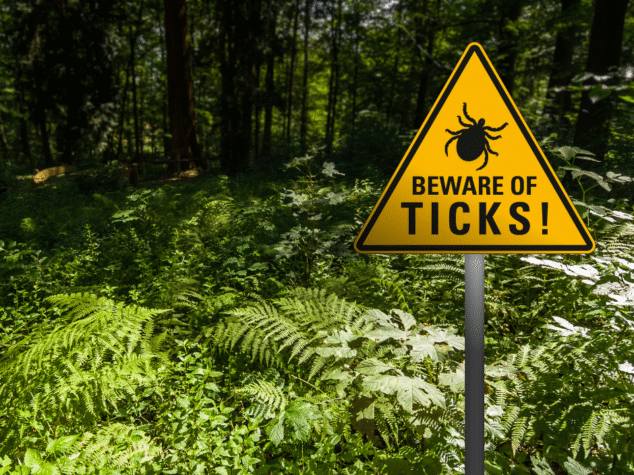As spring turns into summer, ticks become more active—and more dangerous. These tiny pests may be small, but they can carry serious health risks for humans and pets alike. Whether you’re a homeowner, a business owner with outdoor seating, or responsible for a community playground, protecting your outdoor spaces from ticks should be a top priority.
Here’s what you need to know about tick behavior, risks, and how to keep your property safe and enjoyable for everyone.
Why Ticks Are a Growing Concern
Ticks thrive in warm, humid environments and are most active from late spring through early fall. Increased suburban development and warmer winters have expanded their habitats into areas once considered low risk.
What’s at stake?
Ticks can transmit harmful diseases such as:
- Lyme disease
- Rocky Mountain spotted fever
- Anaplasmosis
- Babesiosis
These illnesses can affect both humans and pets, with symptoms ranging from mild fatigue to severe neurological or cardiac complications if left untreated.
Where Ticks Hide
Ticks don’t jump or fly—they wait for a host to pass by and latch on. They tend to live in:
- Tall grasses and weeds
- Leaf piles and woodpiles
- Dense shrubs and overgrown landscaping
- Under decks, fences, and outdoor furniture
- Along trails, fence lines, and the edges of wooded areas
For businesses with outdoor seating or for families using backyards and playgrounds, these hiding spots can be closer than you think.
How to Tick-Proof Your Outdoor Spaces
1. Keep Grass Cut Short
Mow frequently and keep grass trimmed to under 3 inches. Ticks prefer tall, shady grasses where they can stay cool and hidden.
2. Remove Leaf Litter and Debris
Rake leaves, clear brush, and move woodpiles away from frequently used areas. This eliminates prime tick habitats.
3. Create a Barrier
Add mulch or gravel borders between wooded areas and lawns or seating zones. This “dry zone” discourages ticks from crossing into high-traffic areas.
4. Use Tick Tubes or Tick-Control Products
For larger properties, tick tubes (which treat rodents that ticks feed on) or professional tick treatments can reduce populations significantly.
5. Treat Pets Regularly
If animals use the space, keep them on vet-recommended tick preventatives to prevent hitchhiking ticks from being brought into your yard or building.
6. Consider Professional Pest Control
Ongoing tick prevention treatments from a pest management provider can create a barrier of protection, especially important for businesses with customer-facing outdoor areas.
Tips for Playgrounds and Outdoor Dining Areas
- Install tick-safe landscaping (low-maintenance shrubs, gravel paths, and hardscapes).
- Encourage guests to avoid sitting directly on the grass.
- Post signage reminding parents and staff to check children for ticks after play.
- Provide bug spray dispensers or wipes for customer use.
Ticks are more than just a nuisance—they’re a serious health threat. But with smart landscaping, regular maintenance, and the right prevention strategy, you can enjoy your outdoor space with peace of mind. Whether it’s a family backyard, a neighborhood park, or an outdoor café, taking action now can prevent problems later.

